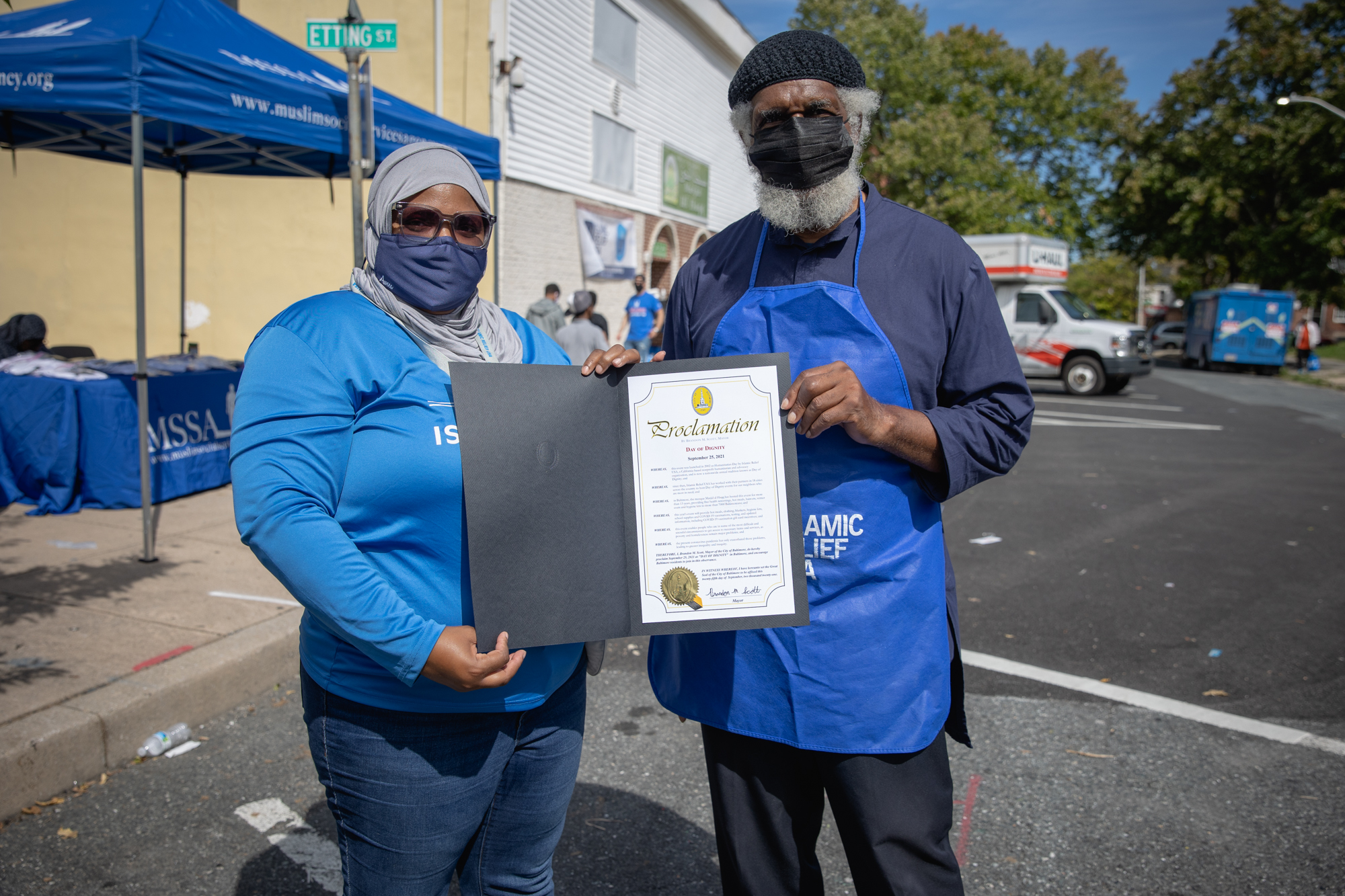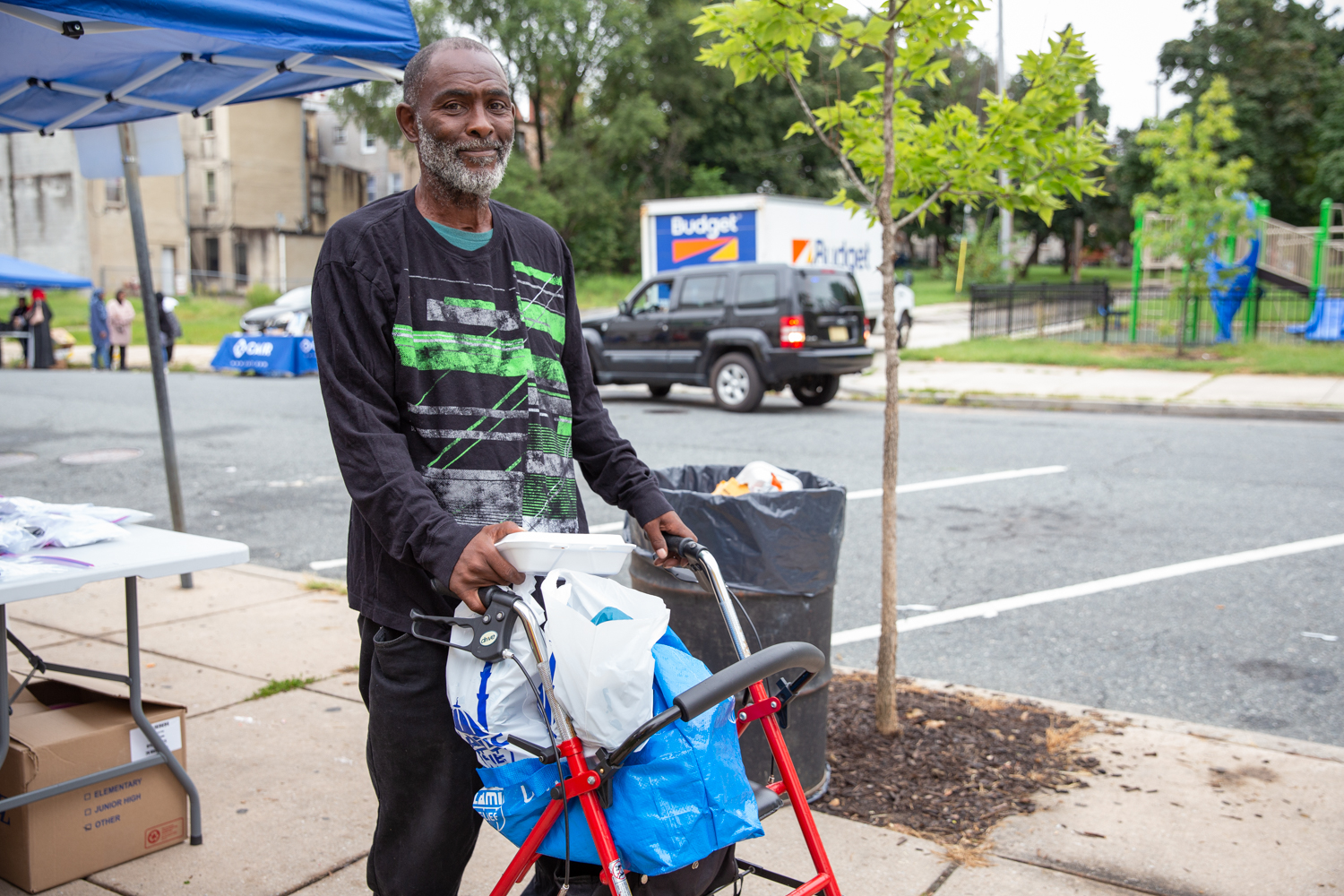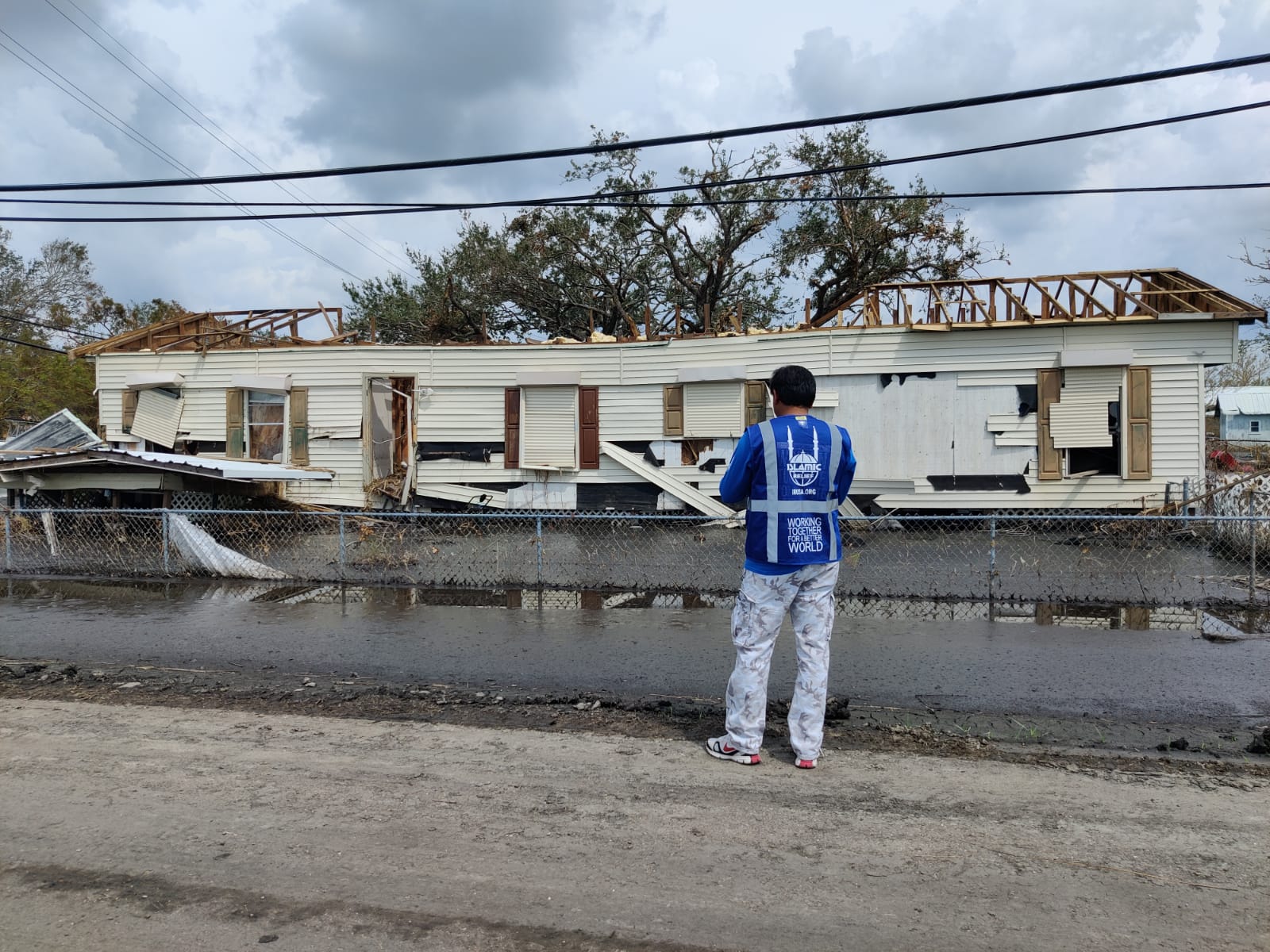
Behind the Vest: Emergency Response to Hurricane Ida
IRUSA’s own Araif Yusuff discusses Hurricane Ida relief

August 2021: One of the most challenging disaster response months IRUSA has faced since the inception of our humanitarian mission and effort. On one hand, more than 500,000 Afghan refugees were suddenly displaced in Afghanistan or in foreign countries that were put on notice of their arrival just days before–they fled turmoil and increased violence that came on the heels of the U.S. withdrawal after 20 years in the country. On the other hand, category 4 Hurricane Ida slammed against the southern shores of America, with the gusto of the second most-damaging hurricane in Louisiana history. More than 1,000,000 people were left without power. Forty people died.
Araif Yusuff, IRUSA’s interim Director of Programs, puts in perspective what it means to respond to multiple disasters at the same time, and how there can even be a sense of calm amidst the chaos.
Q:
IRUSA’s Disaster Management Team has, unfortunately, had to deploy for many different types of emergencies across the country. How was the deployment to Louisiana for Hurricane Ida different from some of the others?
A:
Every disaster is different, right? They all come with their own context and needs. In terms of protocol, our response for Hurricane Ida was generally in line with others–but a difference I would add was the mental and emotional state of the staff. When Ida happened, we were in the midst of the emergency with Afghan refugees coming from Afghanistan into Air Force bases across the country. Our DMT was heavily involved in that, especially with coordination with some government or VOAD (Voluntary Organizations Active in Disaster) partners. We had been monitoring Ida for some time before it hit to prepare, but still, being in the middle of what was happening to our Afghan sisters and brothers, and trying to help them, and still trying to plan how to help communities in Ida’s path–and we have to decide how to split our resources for both… it was a heavy-hearted. And all this while still in COVID-19, pandemic mode. So, in that sense, this was different.
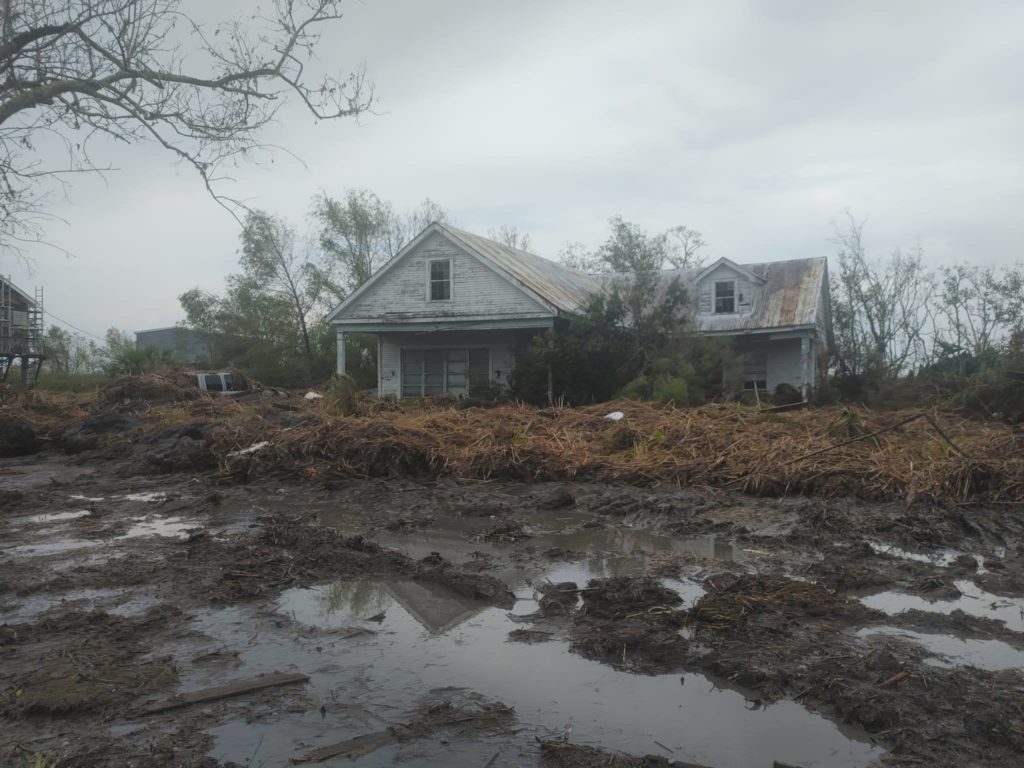
Q:
Can you describe the damage in Louisiana from Hurricane Ida?
A:
Our Disaster Management Team members were there, and reported back pretty regularly with pictures, videos, and more. It was pretty devastating.
Disaster sites are usually different from one another. But one thing they all have in common is that the initial sight, the first time you take in how massive it is, it’s overwhelming. You walk in there and see the level of damage that just nature can wreak on a community… In this case, it was the water–you couldn’t tell where the road ends and begins; where there’s a ditch or where it’s safe to pass. It was still heavily raining when our staff were there. So, I mean, the damage in New Orleans, especially in that area that we’re working in, is utterly devastating to see. Just look at it. Ida was a major hurricane–but sometimes you forget the effects that a storm like this could have on communities, especially those in the coastal areas.
Q:
Does IRUSA work alone in a situation like this or are there collaborations with partners?
A:
So on this particular deployment, we were there to assist our longtime disaster partner the American Red Cross. We were there supporting “DDA,” which are “detailed damage assessment” operations. That essentially means going around the neighborhood and assessing the level of damage each home sustained, whether it has been unaffected, has suffered major or minor damage, or has been completely destroyed. That data gets reported back to the Red Cross. DDAs are important because they help the relief groups understand the needs of the community and what type of financial resources this community would need to get. The reports are also used by other organizations, especially, when folks are applying for their FEMA assistance, that data can sometimes be used to help verify that X area had X level of impact, and so on. So many houses were destroyed by Hurricane Ida. So our team was there for more than a week doing those assessments–we covered about 9,000 reports.
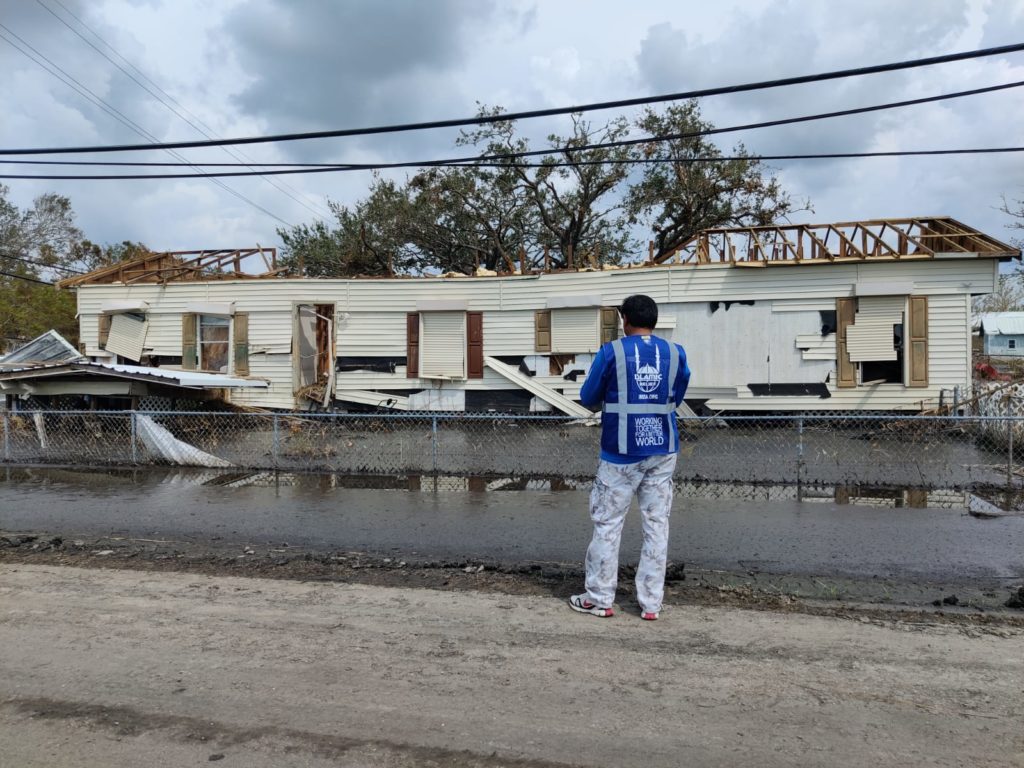
Q:
The world has certainly been seeing more and more emergencies happening, seemingly, all at once. IRUSA CEO Sharif Aly recently called it “a heightened level of overlap between disasters.” How is it from the programmatic side, and from the disaster response side, to now be working to provide aid for survivors of a hurricane and also work to help newly-arrived Afghan refugees, balanced with other emergencies that we have to respond to?
A:
It’s been really tough! There was so much overlap this year. The closest year I can remember to this was 2017, when we had category four, category five hurricanes back-to-back. In this case, IRUSA’s DMT, which includes staff and volunteers, had been working to rebuild homes destroyed by Hurricane Harvey in Houston while also rebuilding homes damaged by flooding in Prince George’s County, MD. We were working in Michigan to help families affected by flooding too. Then, there was a tropical storm in North Carolina that our coordinator there was working on.
So, about four projects in progress simultaneously… and then came Ida. And, of course, just before Ida, came the crisis facing Afghan families and the subsequent influx of Afghan refugees into the US.
Many overlapping emergencies, and, sometimes, coordination becomes really stretched, because everybody’s trying to help as much as they can–you’re stretched so thin. That’s probably the hardest part for us here at IRUSA–we want to help EVERYONE, but, sometimes, we realize we cannot. So, we have to step back and figure out how to help as many people as we can. It’s a hard thought and conversation to have: Where are we going to allocate resources? Where is the most need? Sometimes you can’t really differentiate. Look at the devastation in Louisiana, from Ida for instance. The Northeast was badly affected by Ida too–there was significant flooding in the New York and New Jersey area.
These are tough decisions; you don’t really want to minimize a disaster or any kind of event that’s disaster based; at the same time, that’s when you have to think: “Okay, I have a limited amount of resources, I have to do this here and this here…”
One of the blessings of being with IRUSA is that we are ready and willing to go above and beyond–both with those from DMT on the ground and our other staff stepping in to fill in the gaps. For example, we had staff taking care of delivering supplies in New Jersey for the Afghan refugees or delivering supplies to the American Red Cross base for the incoming people that are coming in from the DMV area. So, alhamdulilah, we were able to do a little bit more than we had initially anticipated.
That’s the benefit of working with an organization that has a humanitarian focus.
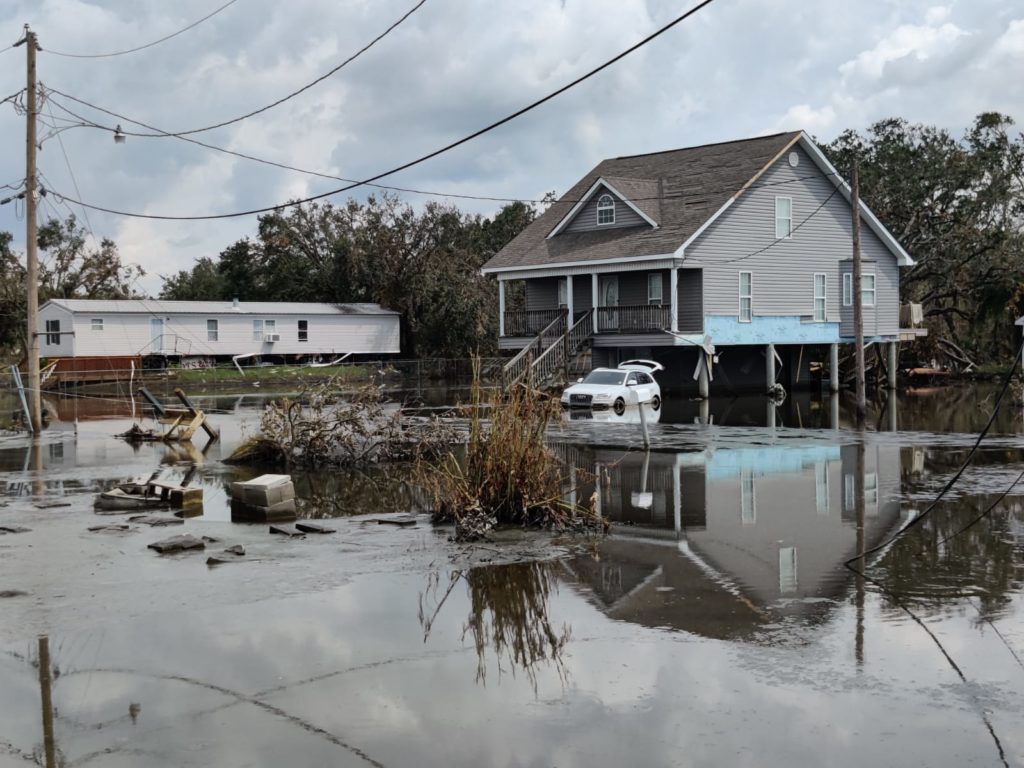
Q:
How can staff or volunteers adjust so quickly in disaster situations, especially when there are multiple things happening at the same time?
A:
Our staff and volunteers are trained pretty well. And they’ve been doing this, especially disaster management, for quite a while, some of them. And so they have this ability to kind of putting things into perspective, and being ready to do the job that they have on hand. Immediately when the call came in to deploy to Louisiana everybody was in that response mode, where they’re , “Okay, this is the mission, this is what we have to do! People are suffering; we have to get out there as soon as we can to help!” Masha’Allah, their ability to shift mindsets and do the job at-hand is remarkable, and being able to compartmentalize everything that’s moving forward and be available, I think that’s the most important thing. Doing DDA work, you come into contact with individuals who have just gone through a lot. They are processing trauma, and, as a disaster responder, you have to be able to walk them out of that, or at least be able to lend a listening ear. Alhamdulillah, IRUSA DMT staff and volunteers were able to do that, on top of all of the work they were assigned to.
Q:
What is something that you communicate to disaster responders to help keep them positive or OK. How do you keep that all in perspective?
A:
I emphasize self-care: You have to be able to be able to take care of yourself and make sure that you’re in a good mental state, make sure that you’re well rested. People are going to rely on you-you may become their hope as they see you, the relief worker, coming in and helping. The other thing that I really encourage staff to do is be prepared. And when I say “be prepared,” I don’t mean be prepared for disasters–I mean prepare your mindset. Disasters are unexpected…you’re going to be called to go X, Y, and Z place or be called to do this or that. So always be prepared.
I remember in 2017, Hurricane Harvey: We were all scheduled to come back home to see our families after an LTR deployment. We were exhausted. Then, we were rerouted straight to Dallas to help with a mega shelter that was set up by the American Red Cross. Then after a couple days, we went into Houston to do DDA work again. So having that mindset of preparedness, you know, what, “I know, this is what was expected,” and that, at any given moment, anything can change, you have to be ready and OK with that.
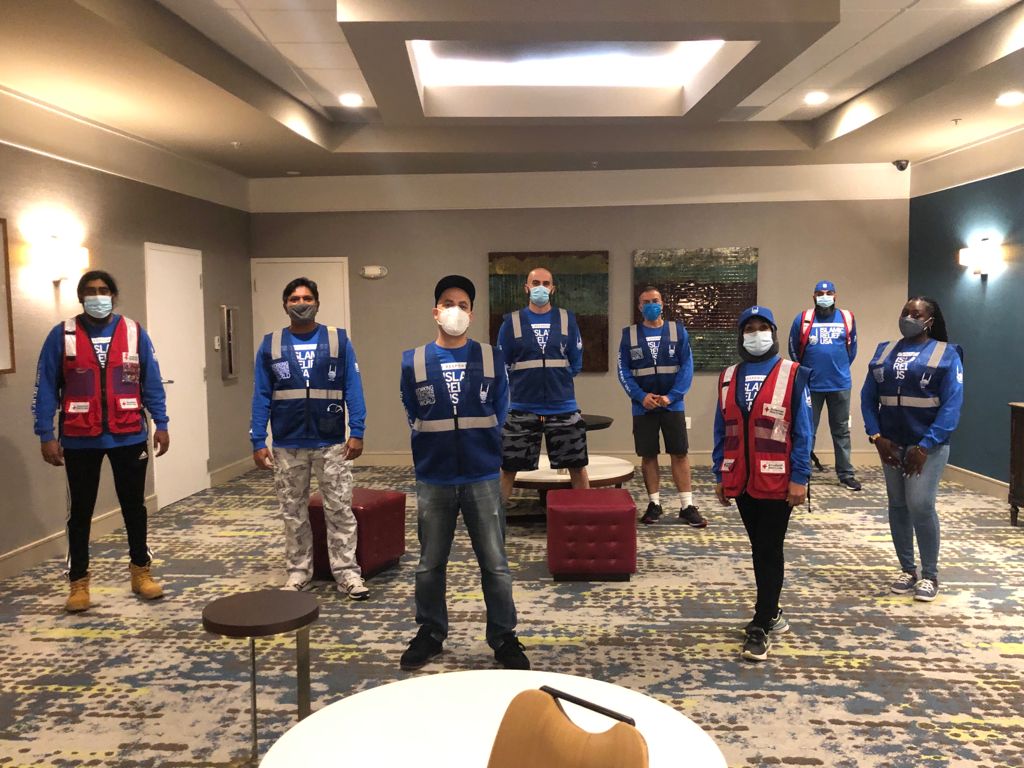
Q:
What sort of fulfillment do you think volunteers and staff may get from this work?
A:
They say the happiest people are the people who are in service to others. And when you’re there, all you’re thinking about is how can I be of benefit to this person I’m trying to help or this community that I’m trying to help? That comes with its own sort of calm. I call it the tranquility of the heart.
It really purifies you as a person because it makes what you’re going through, what your life situation is, seems not as important. Right? When you go in and see everybody who lost everything that they amassed, even personal items that got destroyed by a flood, and everything that they have is sitting in the front lawn, waiting for somebody to come pick it up either, or the sanitation department, or whoever’s there doing disaster recovery to come pick it up. A survivor is thinking “How do I rebuild my life?” It puts things into perspective for you… this person in front of me needs a lot of help. And you feel good about being able to help.
It’s the nature that we have within us as human beings that makes us feel good. There is an unwritten rule of motivation when you’re in a disaster field: No matter how tired you are, no matter how frustrated you are, you just want to keep going with a smile, and to provide that hope to the people. When you meet individuals who do this type of disaster work, they’re often the jolliest person you’ll meet. They’re patient too. Disaster responders quickly learn that the universe does not revolve around them. You very well understand that cliche about being part of an ecosystem. It’s not about what I want to do. When you respond to a disaster, you’re outside of your comfort zone…literally (sometimes even having to sleep in cots at a shelter because no hotels are available for instance).
You’re going there at an inconvenience, and you’re happy to do it. It brings tranquility to your heart. It’s kind of ironic because you feel calm in the midst of chaos, but for anyone who has been there to help, they’ll know what I mean. And I certainly encourage anyone who is able to sign up to volunteer to help people in their times of need. You’re serving others, and there is no sense of calm and gratitude like it.
